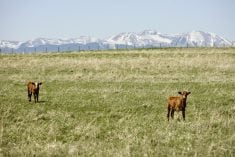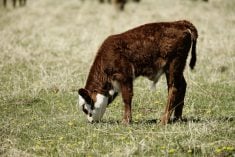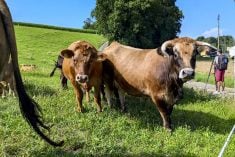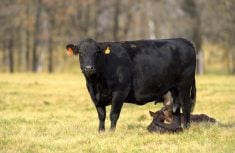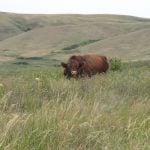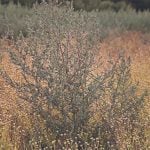Shipping fever. Bovine respiratory disease (BRD). Whatever name you give it, it remains the number one cause of death in feedlots.
It pops up on cow-calf operations, too. The Beef Cattle Research Council’s website notes that BRD is a leading cause of death, illness and antibiotic treatment in calves from three weeks of age to weaning on the ranch.
And there’s no eliminating the pathogens that cause this respiratory disease.
Read Also

Canadian Beef Check-Off Agency reports on investments and activities
The check-off agency’s work behind the scenes is what ensures cattle check-off dollars are invested wisely, accounted for transparently and deliver measurable value back to producers and importers.
“One thing that’s really important to remember about BRD is that it’s out there. It’s ubiquitous. Cattle have it all the time,” said Dr. Trent Wennekamp during an interview. Wennekamp is a veterinarian and owner at the Lloydminster Animal Hospital in Lloydminster, Alta. Healthy, unstressed cattle generally don’t get sick, he explained, but as animals become more stressed and less healthy, “that allows those bugs to get going.”
It’s important to remember that, he said, because it’s not so much that cattle are exposed to the pathogens and then get sick. “It’s more the right conditions have to exist to allow it to become a problem.”
BRD basics
Broadly speaking, BRD is disease of the upper or lower respiratory tract, notes the Beef Cattle Research Council. Wennekamp said there are three main bacteria that cause the disease, although other pathogens can join, or even start, the party (more on that later).
In most cases, the most significant BRD bacteria is Mannheimia haemolytica, or what used to be called Pasteurella haemolytica. Pasteurella multocida and Histophulus somni (formerly known as Haemophilus somnus) also “cause a lot of issues,” said Wennekamp.
Viruses such as infectious bovine rhinotracheitis and bovine respiratory syncytial don’t necessarily cause a significant disease on their own, Wennekamp said, but sometimes they allow other pathogens to get a foothold.
Biosecurity and BRD
A few years ago, Wennekamp did a graduate degree looking at BRD, calf diarrhea and biosecurity on cow-calf operations, as well as antimicrobial resistance in feedlot calves. He surveyed producers on biosecurity practices through the Western College of Veterinary Medicine’s cow-calf surveillance network. About 80 people responded.
Wennekamp said they found three main points related to herds struggling with BRD and biosecurity. The first was that they tended to purchase more animals. Community pasture spread was the second factor. And finally, failure to vaccinate new animals was linked to more BRD, he added. Although BRD and calf diarrhea weren’t linked, prevalence of calf diarrhea was linked to the same three factors, he said.
While limiting the number of animals coming into the herd is “going to be positive,” a completely closed herd isn’t realistic. Wennekamp said people are going to need to buy bulls, and likely some replacement heifers. But there are things producers can do to slash the risk.
“If you know the disease status of the herd that they’re coming from, that’s going to be really helpful. If it’s similar to yours, and a fairly healthy herd, that’s definitely going to help.”
Bringing in cattle from a herd that’s well-vaccinated and doesn’t have many BRD issues is going to be less risky than buying cattle from an auction mart, possibly from a mix of herds. In that situation, he suggested being aware of the risk and doing whatever you can to reduce potential disease spread to the main herd. For example, keeping the new cattle separate for a while and vaccinating them are good practices.
Similarly, many producers use community pasture, and telling them to stop isn’t a practical solution. Vaccinating cattle before they’re shipped to community pasture is helpful, he said. Trying to reduce the number of herds your cattle are exposed to also cuts risk. It’s a good idea to know about the herds your cattle will be exposed to, and getting everyone following similar vaccination protocols.
“So there’s lots that can be done, even working within the current framework of how cattle are raised in Western Canada. And being aware of it and not ignoring it is probably the first step.”
Stress
While completing his graduate degree, Wennekamp also undertook a project comparing BRD and anti-microbial resistance in feedlot calves bought through an auction mart or ranch-direct.
“We would think of those as being two fairly different populations,” said Wennekamp. He said they found quite a few differences in the types of bacteria they found, though it wasn’t always things they could use practically. The auction mart calves seemed to have more of the Mannheimia haemolytica, “and a bit more actual (antibiotic) resistance in those calves.”
Wennekamp said they found a significant amount of antibiotic resistance. “And that is certainly concerning.”
Principally, the antibiotic resistance was to the oxytetracycline class (Bio-Mycin, Oxyvet, Liquamycin). The macrolide class (Draxxin, Micotil, Zuprevo) also had “a fair bit of resistance and increasing resistance over the feeding period, which is, of course a concern, and that is seen right across North America.” He added other studies have also found resistance to those two groups of antibiotics.
They also saw more Pasteurella multocida and Histophulus somni in the ranch-direct calves. The ranch-direct calves were relatively healthy, he added, but the study confirmed that even healthy cattle carry pathogens.
One takeaway, he said, was all the dynamics that trigger stress in calves seem to be more significant in causing disease than the actual pathogens. In the right situation, with a stressed calf, those pathogens develop into disease. On the other hand, “in a calf that doesn’t have those stresses, then the disease factors aren’t as significant.”





